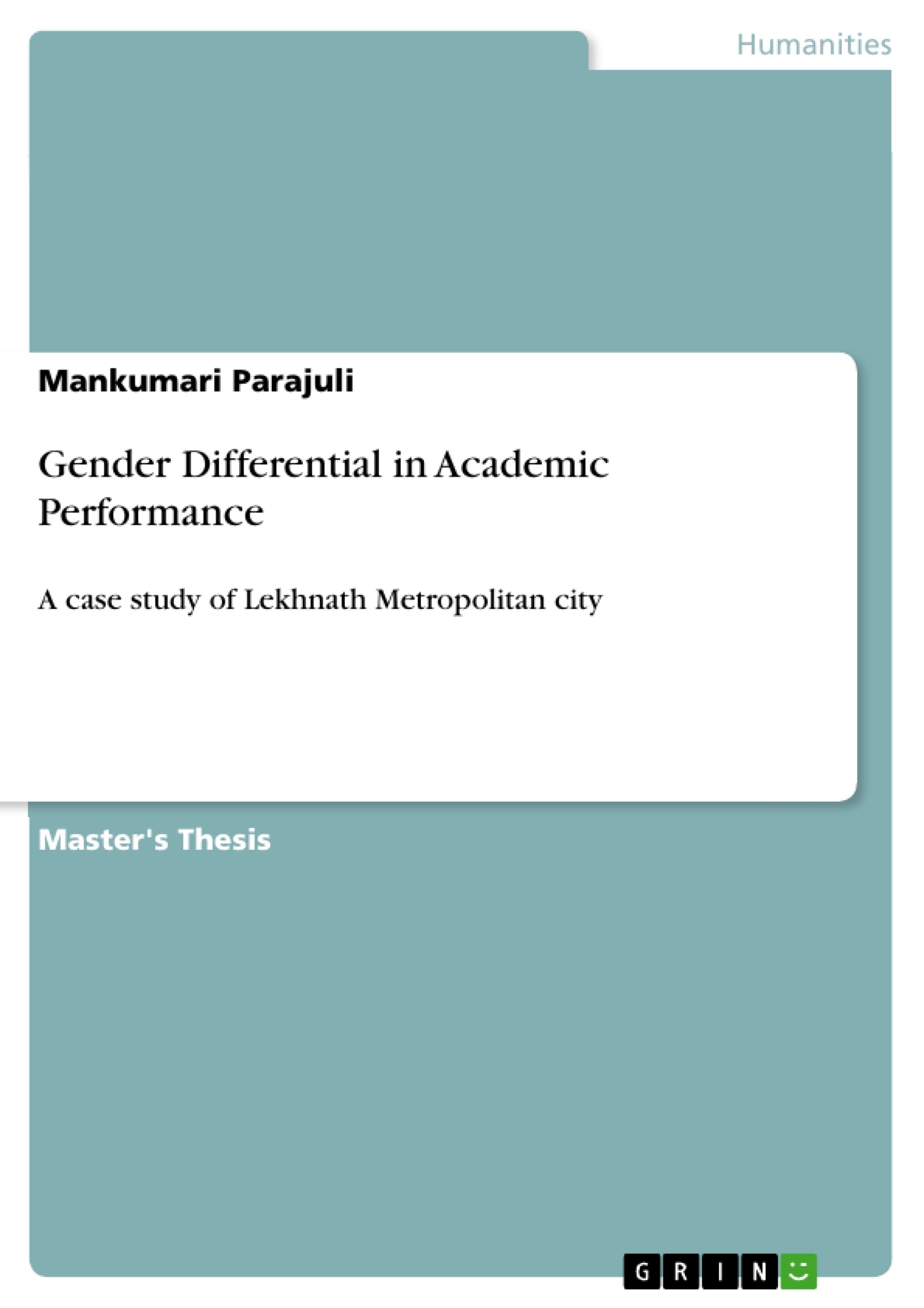The aim of this study was to analyze gender differentials on academic performance in public and private schools. A school based descriptive cross sectional study was conducted among 240 students in public and private school in Lekhnath Municipality.
The socio-economic development is a main thrust of the State. Unless the development is based on inclusive approach, the process of development remains incomplete. For inclusive development, gender development should be taken as a backbone. The goal of gender development in such context is to achieve a social development whereby, both male and female have equal opportunities in all aspects of social life including, education, health, economy, social position, and recognition. In Nepal, the situation is still very far away. The social status of women/girl in Nepal is generally low, a situation attributable to both the general poverty of the country and the gender-biased distribution of power and resources in the family and in society.
Inhaltsverzeichnis (Table of Contents)
- CHAPTER I INTRODUCTION
- 1.1 The Context
- 1.2 Statement of Problem
- 1.3 Research Rationale
- 1.4 Research Objective
- 1.5 Research Hypothesis
- 1.6 Limitation of the study
- 1.7 Organization of the Study
- CHAPTER II LITERATURE REVIEW
- 2.1 Definition
- 2.2 Theoretical background of the study
- 2.3 Gender and conceptions of equality in relation to education
- 2.4 Social factors which influence girls' and boys' performance and behavior
- 2.5 Teaching learning (reading) materials
- 2.6 Subject preference and choice
- 2.7 Motivational and psychological issues
- 2.8 School environment
- 2.9 Teacher attitudes
- 2.10 Review of empirical studies
- CHAPTER III CONCEPTUAL FRAMEWORK
- CHAPTER IV RESEARCH METHODOLOGY
- 4.1 Study Area
- 4.2 Nature and Sources of Data
- 4.3 Research design
- 4.4 Population
- 4.5 Sample size
- 4.6 Sampling procedure
- 4.7 Data collection procedure
- 4.8 Analytical framework
- CHAPTER V DATA ANALYSIS AND INTERPRETATION
- 5.1 Socio-demographic Profile of the Respondents
- 5.2 Schools environment
- 5.3 Academic performance of the students
- 5.4 Types of school and academic performance
- 5.5 Information regarding gender differentiates in academic performance
- 5.6 Association of independent variables with student performance
- 5.7 Association of student performance with type of school
- 5.8 Association of student performance with gender
- 5.9 Factors associated to academic performance
- CHAPTER VI FINDINGS AND DISCUSSION
- CHAPTER VII SUMMARY, CONCLUSION AND RECOMMENDATION
- 7.1 Summary
- 7.2 Conclusion
- 7.3 Recommendation
Zielsetzung und Themenschwerpunkte (Objectives and Key Themes)
The dissertation aims to analyze the influence of gender on student academic performance in both public and private schools in Lekhnath Municipality, Nepal. This study aims to contribute to the understanding of factors affecting academic achievement and provide insights for improving educational strategies and policies.
- Gender disparities in academic performance
- The influence of school type (public vs. private) on academic outcomes
- Socioeconomic factors affecting student achievement
- School environment and its impact on student learning
- Teacher attitudes and their role in student performance
Zusammenfassung der Kapitel (Chapter Summaries)
Chapter I provides a comprehensive overview of the context, problem statement, research rationale, objectives, hypothesis, limitations, and study organization. Chapter II delves into the literature review, exploring relevant definitions, theoretical frameworks, gender and educational equality, social factors influencing student performance, teaching materials, subject preferences, motivational and psychological aspects, school environment, teacher attitudes, and a review of existing empirical studies. Chapter III presents the conceptual framework used in the study. Chapter IV outlines the research methodology, including the study area, data sources, research design, population, sample size, sampling procedure, data collection, and analytical framework. Chapter V analyzes and interprets the collected data, exploring socio-demographic profiles of the respondents, school environment, student academic performance, the relationship between school type and academic performance, gender disparities in performance, and factors associated with student achievement. Chapter VI presents the findings and discussion of the study. This section focuses on the significant insights gleaned from the data analysis, drawing connections to the existing literature and providing a nuanced understanding of the factors influencing gender differentials in academic performance within the context of Lekhnath Municipality.
Schlüsselwörter (Keywords)
The study focuses on gender differentials in academic performance, public and private schools, Nepal, socioeconomic factors, school environment, teacher attitudes, academic achievement, educational equality, and student motivation.
- Quote paper
- Mankumari Parajuli (Author), 2017, Gender Differential in Academic Performance, Munich, GRIN Verlag, https://www.grin.com/document/461269



